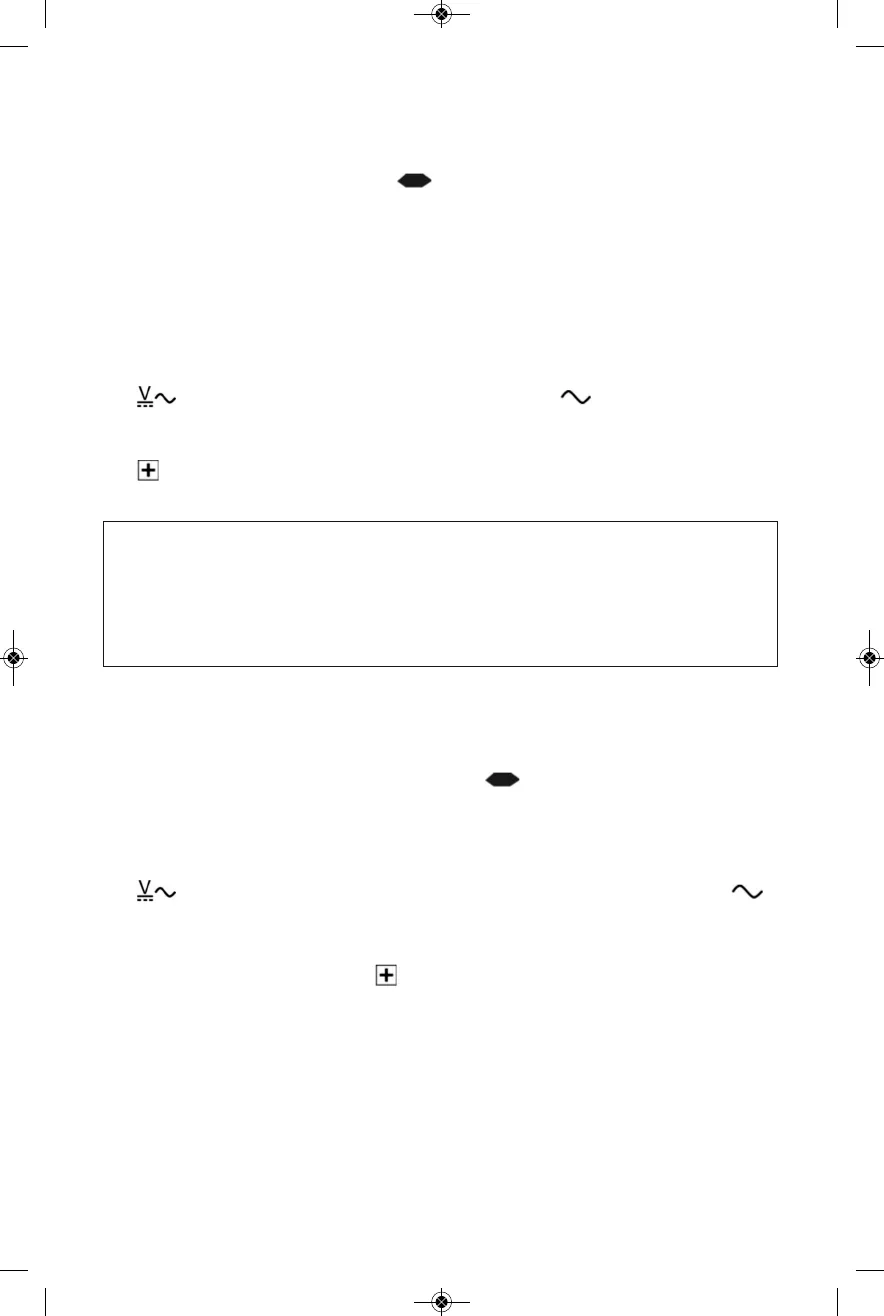In DC current measurement mode, the CMR35T selects a 0 to 400A measurement range
unless the input is greater than 400A. In this case, the unit automatically switches to a
full-scale range of 0 to 600A.
Read the value after it stabilizes. If the symbol appears at the left of the measured
value, as shown in Fig. 2, the current flow is opposite the direction indicated by the
polarity marks on the clamp. To reverse the flow, unclamp the meter, rotate the clamp
180º, and then reclamp the jaws around the line.
When you have finished making measurements, move the function switch to the OFF
position.
MEASURING VOLTAGE
To measure the DC voltage between two points in a circuit, move the function switch
to the position. Press the REL./SEL. button until the symbol does not appear
at the left of the display. Plug the rubber-covered end of the black probe into the COM
terminal of the transmitter unit and the rubber-covered end of the red probe into the
unit’s terminal. Then touch the metal ends of the black and red probes to the points
whose potential difference you wish to measure.
• WARNING
• To avoid exposing yourself to a harmful or fatal voltage and damaging the
transmitter, make sure that the potential you are attempting to measure is less
than 600VDC.
As in current measurement mode, the CMR35T automatically chooses the narrowest
measurement range that includes the tested value. The five available full-scale ranges
are 0 to 400mV, 0 to 4V, 0 to 40V, 0 to 400V, and 0 to 600V.
Read the measured value once it stabilizes. If the symbol appears to the left of the
value, the measured voltage is negative. When you have finished making
measurements, move the function switch to the OFF position.
To measure the AC voltage between two points in a circuit, move the function switch
to the position. Press the REL./SEL. button (callout 7/8 of Fig. 1) until the
symbol appears at the left of the display. Plug the rubber-covered end of the black probe
into the COM jack of the transmitter (callout 13 of Fig. 1) and the rubber-covered end of
the red probe into the transmitter’s jack (callout 14). Then touch the metal ends of
the black and red probes to the points whose potential difference you wish to measure.
8










